When visiting Rome for the first time, anyone can easily get overwhelmed by the sheer number of historical landmarks spread across the huge city.
The Italian capital is surely one of the most culturally rich places to visit in Italy, with gorgeous squares, impressive fountains, and stunning museums.
To help you make the most of your trip to the Eternal City, here’s a list of the 25 most important landmarks in Rome to visit.
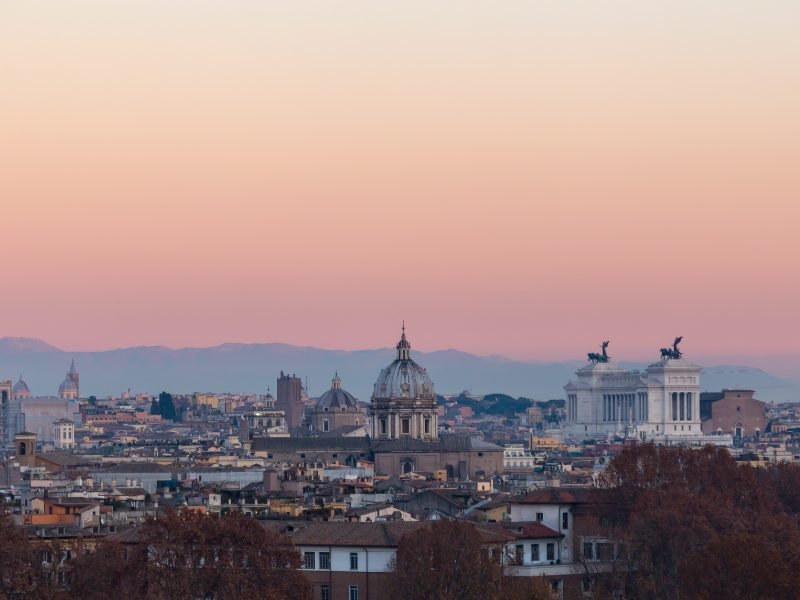
Map of Rome Attractions & Landmarks
The Most Essential Landmarks in Rome to Visit
The Colosseum
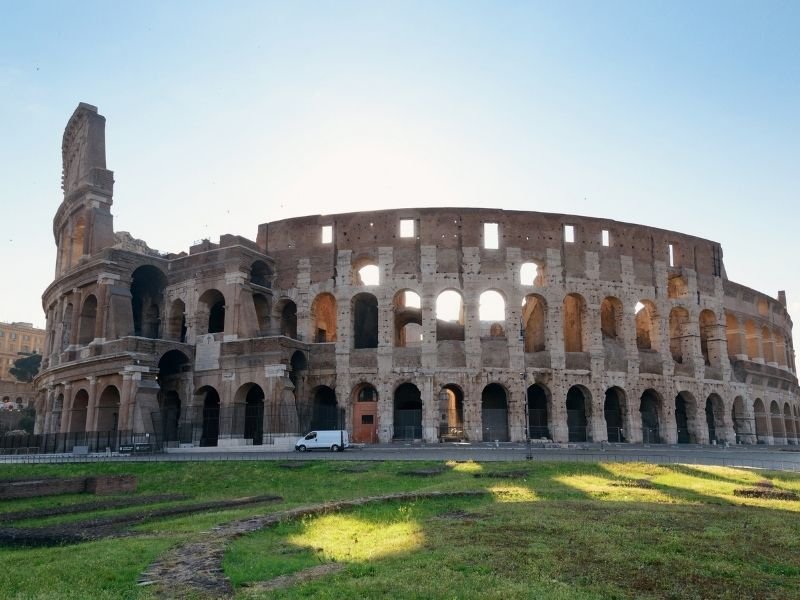
It probably goes without mentioning, but the most obvious landmark in Rome is the very symbol of the city, the Colosseum.
This titanic amphitheater, built by Emperor Vespasian and inaugurated by his son Titus in 80 CE, is the largest amphitheater ever built, and remains standing after nearly two millennia.
The popular landmark welcomes thousands of visitors every day, so you’ll have to plan ahead to get inside to admire its magnificence up close.
This is the #1 Rome attraction, so you’ll want to think ahead about how to best visit to minimize crowds and waiting in line.
If you’re planning to visit the Colosseum, read this guide for helpful tips and tricks for a smooth visit.
Remember to book your ticket online well ahead of your visit. Deal seekers take note, you can get a combined ticket for the Colosseum and Roman Forum.
Roman Forum
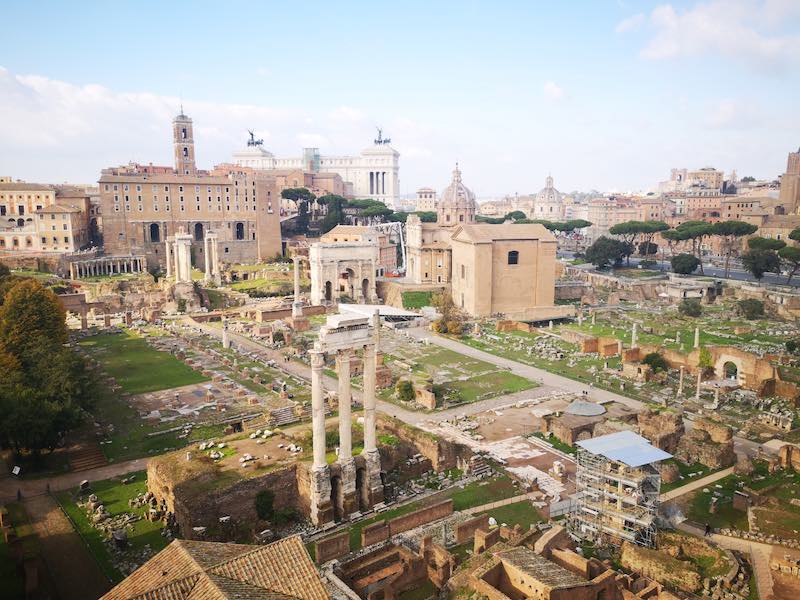
Speaking of the Roman Forum, it’s our next stop!
Extending from the Colosseum to Piazza Venezia, the Roman Forum is an archaeological site right in the center of Rome.
As it now belongs to the Parco Archeologico del Colosseo, access to the Roman Forum is possible with that combined ticket with the Colosseum we just mentioned.
The Forum was the beating heart of Ancient Roman political life, where most government buildings were concentrated.
Today, you can walk among the ruins of many temples and other important buildings.
Although you can see the Forum from the street above it, connecting the Colosseum to Piazza Venezia, it’s worth exploring it up close.
Take your time at this Rome landmark because there is so much to see!
Piazza Venezia
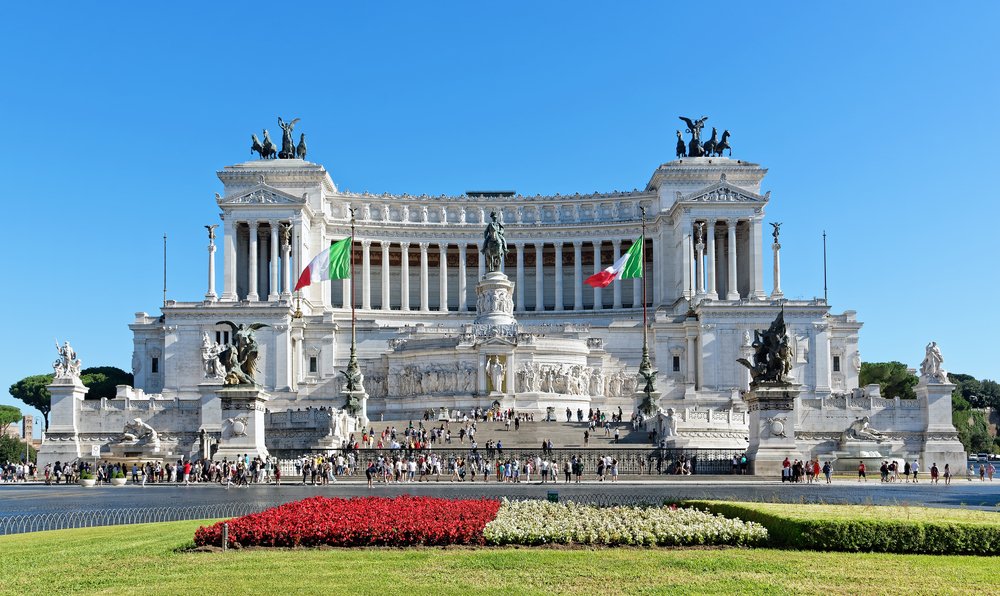
At the other end of the Roman Forum, Piazza Venezia is one of the largest squares in Rome, famous for the monumental building known as the Altar of the Fatherland.
Officially known as the Victor Emmanuel II National Monument, the massive monument took half a century to build, starting in 1885 and only reaching completion in 1935.
The Altar of the Fatherland is dedicated to the first king of unified Italy, Victor Emmanuel II.
Access to the monument is free, except for the observation deck on top.
Even if you don’t take the elevator to the observation deck, you’ll find several other panoramic spots along the way, all of which offer amazing views of Rome.
Trevi Fountain
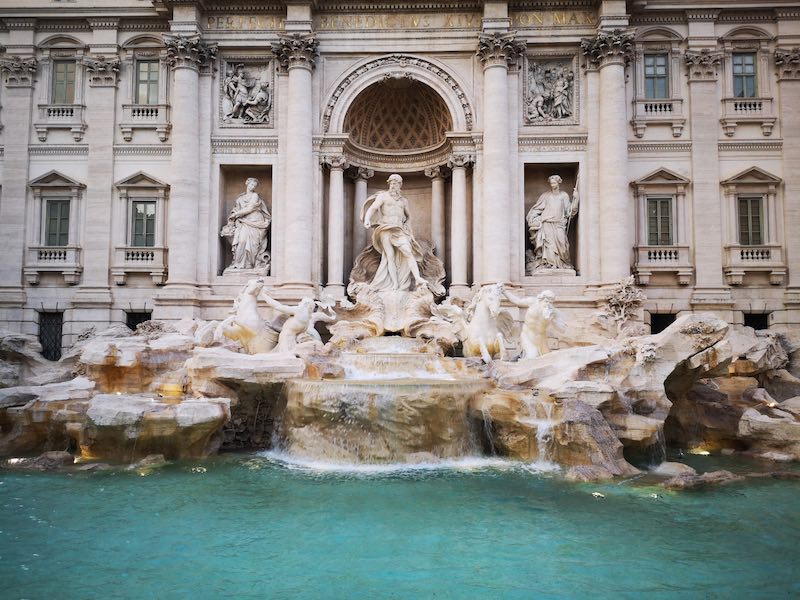
Another iconic spot in Rome, the Trevi Fountain is one of the most visited landmarks in the Italian capital, and is likely the most visited fountain in the world!
The water feeding the fountain comes from the Aqua Virgo aqueduct, the last remaining functional ancient Roman aqueduct.
The Rococo fountain was designed by architect Nicola Salvi and finished in 1762.
The three main sculptures on the fountain represent the god Oceanus at the center with the allegorical figures of Abundance and Health in two niches on both sides.
According to tradition, you must throw a coin in the fountain if you wish to return to Rome.
If you also want to meet the love of your life and marry them, the story goes that you must toss two extra coins – so be prepared to pay up!
Turn your back to the fountain, close your eyes, toss the coin with the right hand over your left shoulder and wish for the best!
There’s often crowds here since this is one of the most famous attractions in Rome, so try visiting early in the morning or late at night to enjoy it in peace.
Pantheon
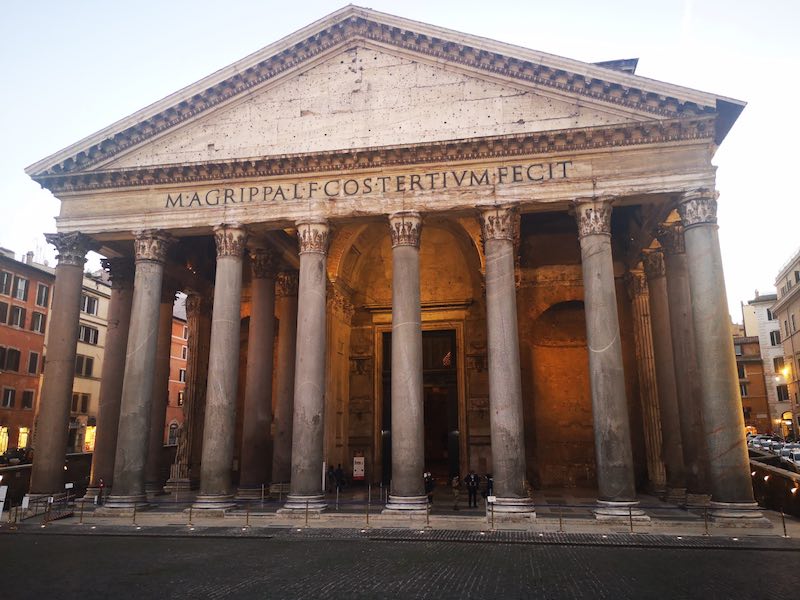
While it may not look like your typical church, the Pantheon in Rome is officially called the Basilica of St. Mary and the Martyrs.
Formerly a Roman temple, the Pantheon was turned into a Catholic church in 609 CE but maintained the original building.
The original building was commissioned by Marcus Agrippa, the right hand of emperor Augustus.
After it was destroyed by a fire, the temple was rebuilt, most likely during Hadrian’s reign, although the inscriptions are still those of the first construction by Agrippa.
The most impressive feature of the Pantheon is the concrete dome with a central opening, the largest of this type ever built… remaining so to this day!
The style of the Pantheon was so iconic that it influenced many later architects who went on to design buildings all over the world.
Admission to the Pantheon is free, but a reservation is required at least a day in advance to visit on weekends and public holidays.
You can reserve on the website here.
Spanish Steps
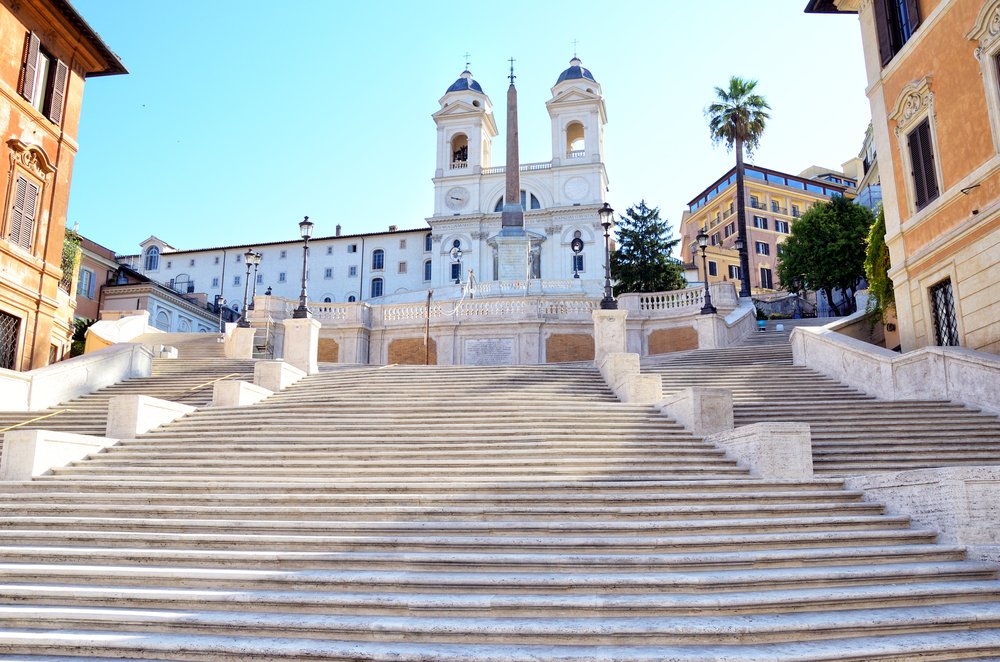
The Spanish Steps are called Scalinata della Trinità dei Monti in Italian, a name that comes from the church at the top of the iconic stairway.
The square at the bottom of the stairway, Piazza di Spagna, is renowned for the fountain at its center, Fontana della Barcaccia, designed by Pietro Bernini.
The Spanish Steps were built between 1723 and 1725 in place of a steep slope.
The famous steps soon attracted the attention of artists and filmmakers and appeared in many movies due to their striking appearance.
The square is also famous for the house of English poet John Keats, just to the right of the steps, and the English tea shop Babington’s Tea Room, on the left.
Piazza Navona

One of the most beautiful squares in Rome, Piazza Navona lies on the spot of the ancient Roman Stadium of Domitian.
The ancient stadium was used for athletics competitions and horse racing, and its ruins lie under the current square.
The most iconic features of the square are the three fountains.
In the middle, the Fountain of the Four Rivers by Gian Lorenzo Bernini features a granite obelisk and four statues representing four rivers, one for each continent known at the time.
Those rivers are the Danube in Europe, the Ganges in Asia, the Nile in Africa, and the Rio de la Plata in America.
The other two fountains are Fontana del Moro, representing an Ethiopian man fighting with a dolphin, and Fontana de ‘Calderari, or Fountain of Neptune.
In front of the central fountain, the Church of Sant’Agnese in Agone is dedicated to the martyr Saint Agnes and houses a shrine which preserves the saint’s skull.
Piazza del Popolo
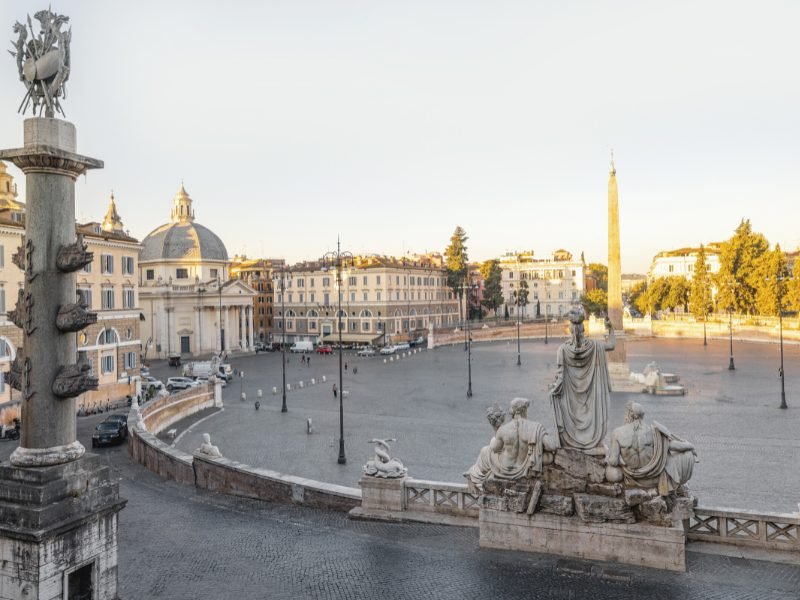
Piazza del Popolo is another large square at the opposite end of Via del Corso from Piazza Venezia.
The main shopping street ends in a round square featuring an Egyptian obelisk and four small fountains at its center.
The obelisk was brought to Rome under emperor Augustus in 10 BCE and originally placed in the Circus Maximus before being brought to Piazza del Popolo in 1589 by the architect Domenico Fontana.
The square was historically used for public executions, with the last taking place in 1826.
The current design dates to the beginning of the 19th century when architect Giuseppe Valadier redesigned it in neoclassical style.
At the time of this redesign, great importance was placed on linking the square to the Pincian Hill and Villa Borghese, one of Rome’s biggest and most important parks.
Vatican Museums
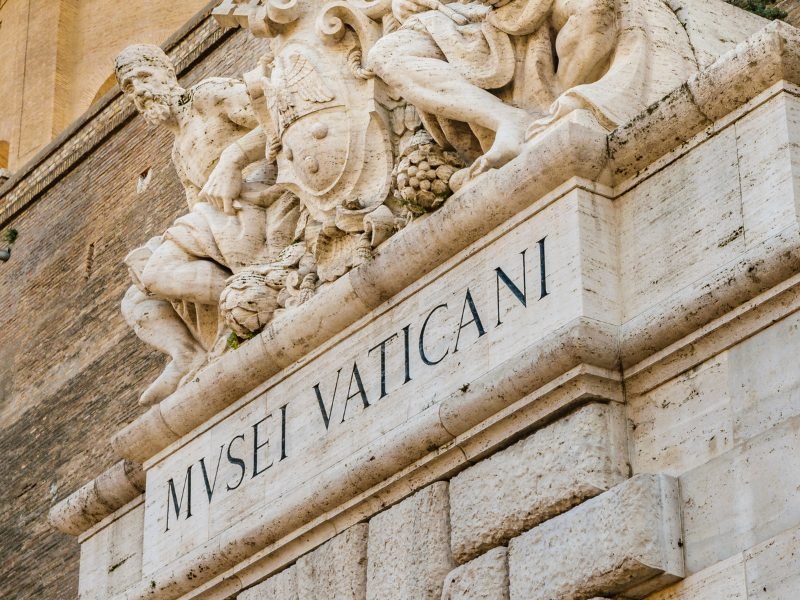
Here’s a little bit of a mind-bending fact: When visiting Rome, you can also visit a separate nation… without ever leaving the city of Rome.
The Vatican is the smallest state in the world by both area and population and is right in the middle of Rome.
Vatican City, also known as the Holy See, is not only the center of the global Catholic faith, but home to one of the most famous museums in the world.
Its notable sights include an impressive art collection and the world-renowned Sistine Chapel painted by Michelangelo.
Visiting the Vatican requires some planning, given the millions of people drawn by the impressive museums… which is why we have an entire guide to visiting the Vatican Museums.
Be sure to book your ticket online well in advance of your trip to avoid standing in long lines.
If you want more peace and quiet, consider booking a guided tour before the museums officially open in the morning, which also includes breakfast at the Vatican.
For night owls, there’s also a guided tour after after the museum closes.
St. Peter’s Basilica
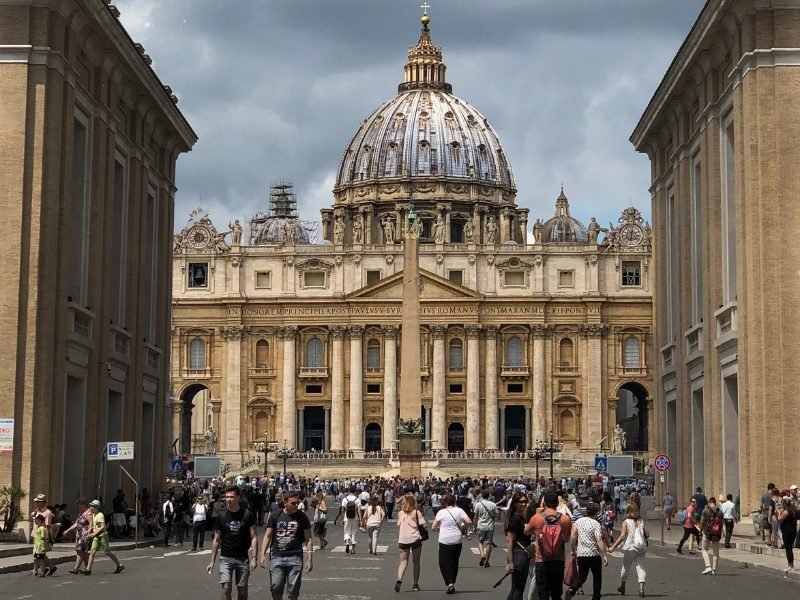
Although it is part of Vatican City, you can visit Saint Peter’s Basilica independently of the Vatican Museums.
To use its official name, The Papal Basilica of Saint Peter in the Vatican (whew, that’s a mouthful) is the largest church in the world and the most important one in the Catholic world.
The Renaissance-style basilica was designed by some of the most renowned architects and artists of their time, including Donato Bramante, Michelangelo, Carlo Maderno, and Gian Lorenzo Bernini.
You can visit the impressive church for free, but there is an entry fee to climb to the top of the dome and for the Vatican Grottoes.
You can also take a guided tour that includes both the dome climb and visiting the grottoes.
Galleria Borghese
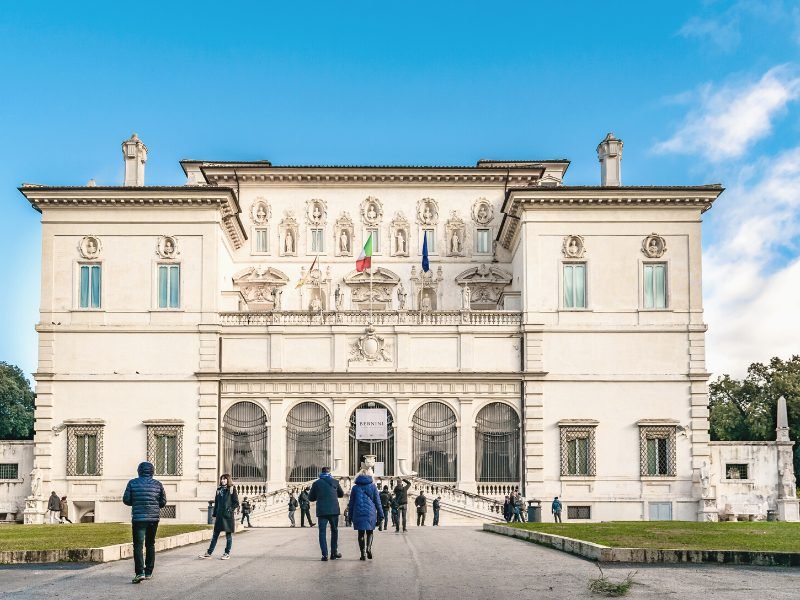
After the Vatican Museums, one of the most impressive museums in Rome is the Galleria Borghese.
Housed in the beautiful Villa Borghese Pinciana, inside the park with the same name, Galleria Borghese houses an incredible collection of paintings and sculptures.
The most notable works are sculptures by Gian Lorenzo Bernini, including the Rape of Proserpine and Apollo and Daphne.
But the Galleria is also home to so much more, including paintings by Caravaggio, Raphael, Rubens, Titian, and many others.
To visit the museum, book your visit online at least a few days in advance, if not more during the peak of tourist season.
Mouth of Truth
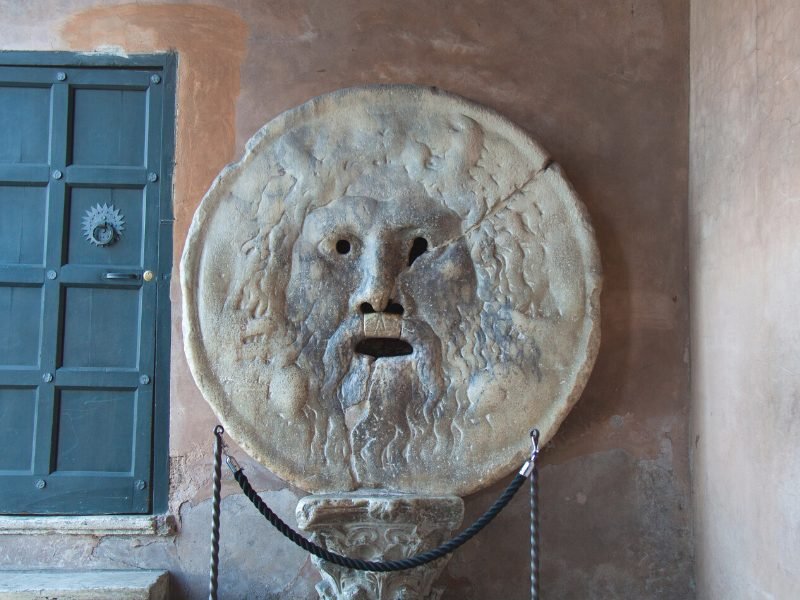
If you’re feeling brave, place your hand inside the Mouth of Truth and tell a lie.
The famous marble mask was said to bite off the hand of anyone who would tell a lie while holding their hand in its mouth!
During the Middle Ages, suspected criminals would be brought to the mask and asked to place their hand in its mouth during the interrogation.
If they lied, the Mouth would bite their hand clean off!
Of course, there was a trick…. and you don’t have to be an expert magician to figure out exactly how this works.
An executioner was standing behind the mask with a sword and would cut off the hand of any accused he thought was lying.
The Mouth of Truth was made famous after appearing in the movie Roman Holiday with Audrey Hepburn and Gregory Peck.
Nowadays, you’ll often find a long line to get a closer look at the mask (and take a photo with your hand in its mouth!) since it’s such a popular Rome landmark.
Castel Sant’Angelo
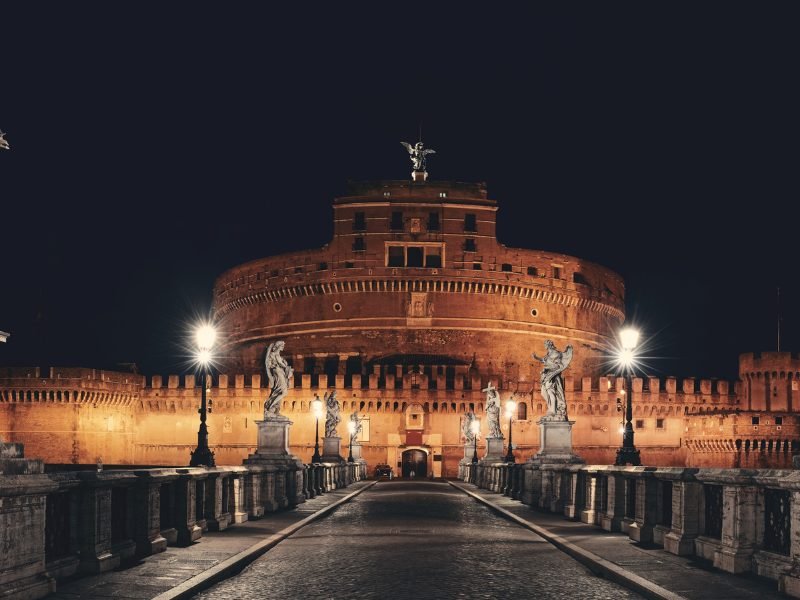
Not far from St. Peter’s Basilica, the mausoleum of Hadrian is also known as Castel Sant’Angelo.
Originally built by the emperor Hadrian to serve as his mausoleum after his death, the castle has served various other purposes over the centuries.
Today, Castel Sant’Angelo is a museum housing impressive frescoes and artworks and offering amazing views from the top.
The bridge in front of the castle, Ponte Sant’Angelo, formerly known as Pons Aelius, also dates to Hadrian’s time.
The statues on the bridge are a more recent addition, designed by Bernini at the end of the 17th century, although he only managed to complete two of them.
St. Clement Basilica

Rome is full of beautiful churches, but St. Clement Basilica is a cut above the rest and truly not to be missed.
The Basilica was dedicated to Pope Clement of Rome, the third successor of Saint Peter, who died in 99 CE.
The current basilica was built in the 11th century on top of a previous one from the 4th century.
During the excavations of the 19th century, archaeologists discovered the ruins of the 1st-century basilica and, below it, ruins of buildings destroyed during the Great Fire of 64 CE.
If you haven’t been counting, that means the basilica you visit today lies on top of three layers of ancient ruins.
You can visit St. Clement Basilica for free and join a guided tour of the underground ruins for a fee.
There are many cool underground areas and catacombs in Rome, and this is one of the most underrated!
Capitoline Museums
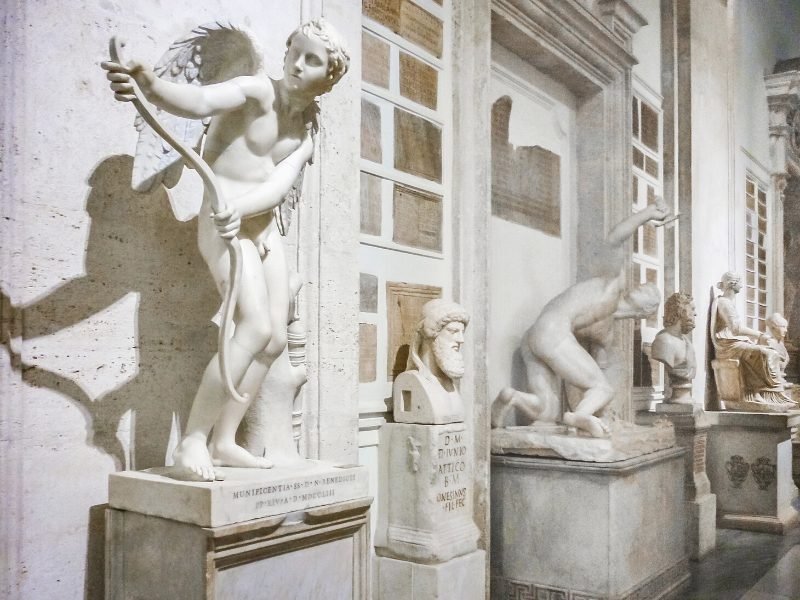
There is no better place to learn more about the city of Rome and admire impressive artworks than the Capitoline Museums.
The collection includes bronze statues, sculptures, frescoes, tapestries, inscriptions, and many other artworks related to Rome and its history.
In addition to the permanent collection, the museum hosts many temporary exhibitions.
It’s open to the public every day, with the exception of a few public holidays, and you can pre-book entry tickets here.
The museum is located on the scenic Capitoline Hill, close to Piazza Venezia, in the beautiful Piazza del Campidoglio.
Basilica of Saint Mary Major
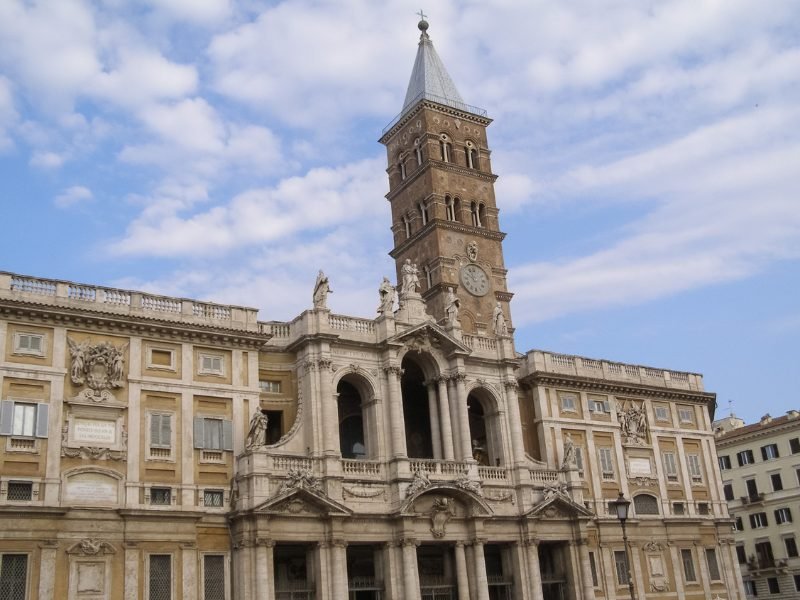
Another beautiful church (I know, there’s already been a few, but hey, it’s Rome, after all) is Santa Maria Maggiore, only a few minutes’ walk from Termini Train Station.
The Major Papal basilica is also one of seven pilgrim churches in Rome belonging to the Holy See.
The Baroque-style Basilica is famous for the mosaics representing the Virgin Mary and the Sistine Chapel designed by Domenico Fontana, with an altar decorated with four gilded bronze angels.
Beneath the altar, the Crypt of the Nativity features a reliquary designed by architect Giuseppe Valadier.
According to legend, this reliquary contains wood from the crib of the nativity of Jesus — but we’ll leave it to you if you believe that.
The Borghese Chapel contains a shrine with an icon of the Virgin Mary.
This very same icon is the one that carried to the church by Pope Gregory during the same procession during which he supposedly saw the vision of Archangel Michael on Castel Sant’Angelo!
Basilica of Saint Paul Outside the Walls
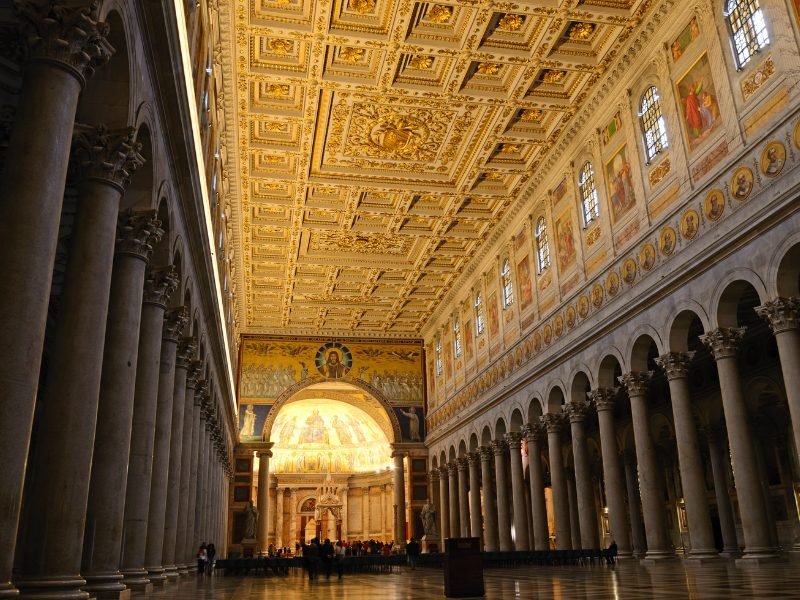
Away from the main tourist areas, Basilica di San Paolo fuori le Mura is another of the four Major basilicas belonging to the Vatican.
“Fuori le mura” means “outside the walls”, referring to the church being literally outside the Vatican Walls.
This is the second-largest Papal Basilica after Saint Peter’s, and it used to be larger than the original Saint Peter’s Basilica.
The basilica was first founded in the 4th century by Emperor Constantine I on the burial place of Saint Paul.
Over the centuries, the church went through several renovations while maintaining the original structure until a fire nearly destroyed it in 1823.
Fortunately, the Church was able to rebuild, and the renovated basilica was reconsecrated in 1854.
You can visit it for free, but if you’d like to stay a little while, you can enjoy a tour of the beautiful cloister and archaeological area for a small fee.
Archbasilica of Saint John
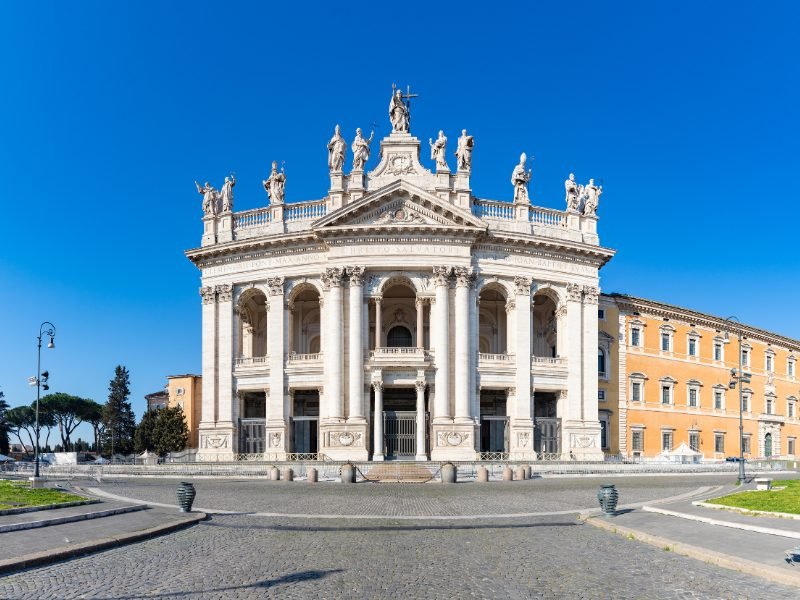
The Papal Archbasilica of Saint John in Lateran is the cathedral church of Rome. Like the other major basilicas, it is outside the Vatican.
Saint John holds the highest rank of all Papal Basilicas and is the oldest, dating to the 4th century CE.
While Saint Peter has an enormous significance to the Catholic Church, the official seat of the Pope is in Saint John in Lateran.
The ancient basilica was transformed during the renovation works directed by architect Francesco Borromini.
He created twelve niches, which were later filled with the statues of the Apostles, sculpted by important Roman sculptors in the Rococo style.
The visit to the stunning church of Saint John is completely free. For a small fee, you can also visit the cloister for a closer look at this beautiful site.
Baths of Caracalla

Ancient Rome used to have several public baths located all over the city.
The Baths of Caracalla were second in size only to the Baths of Diocletian and are among the best-preserved ones.
Given their location a bit further from the main landmarks in Rome, the Baths of Caracalla are usually more tranquil than other tourist attractions, making this hidden gem a perfect way to escape the crowds for a few hours.
On summer nights in Rome, the location serves as a cultural venue, hosting the plays of the Opera Theater of Rome in an unforgettable setting.
You can visit the baths on your own, get an audio guide, or even buy a virtual video guide to see how the baths used to look in the 3rd century.
Trajan’s Market
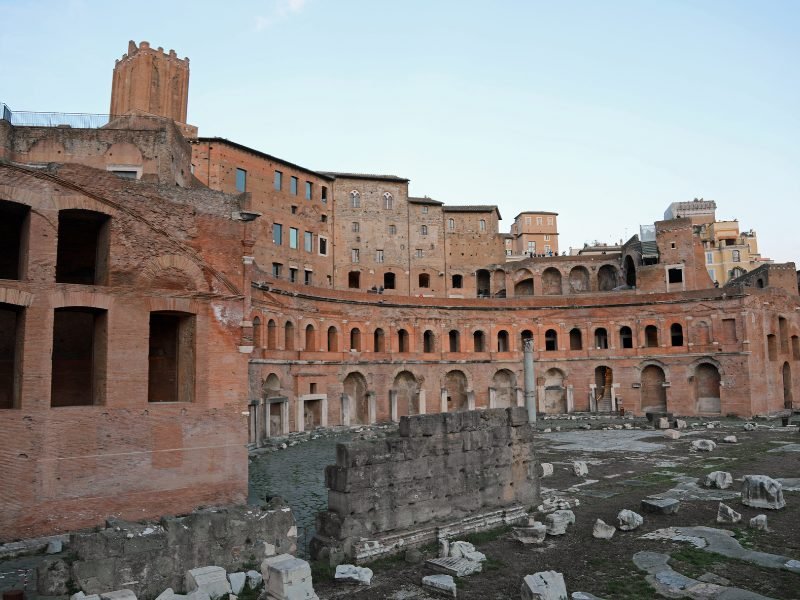
Just across the street from the Roman Forum, Trajan’s Market is an ancient complex of buildings that has been turned into a museum.
For a long time, it was thought to have been a bit like a modern shopping mall.
Archaeologists now believes it was a complex of buildings that included many administrative offices, as well as taverns and halls for concerts.
As well as seeing the inside of the complex, you can also see a collection of sculptures and ruins found during the excavations and temporary exhibitions.
You can buy entry tickets online or at the ticket office. Entry is free on the first Sunday of each month.
Circus Maximus
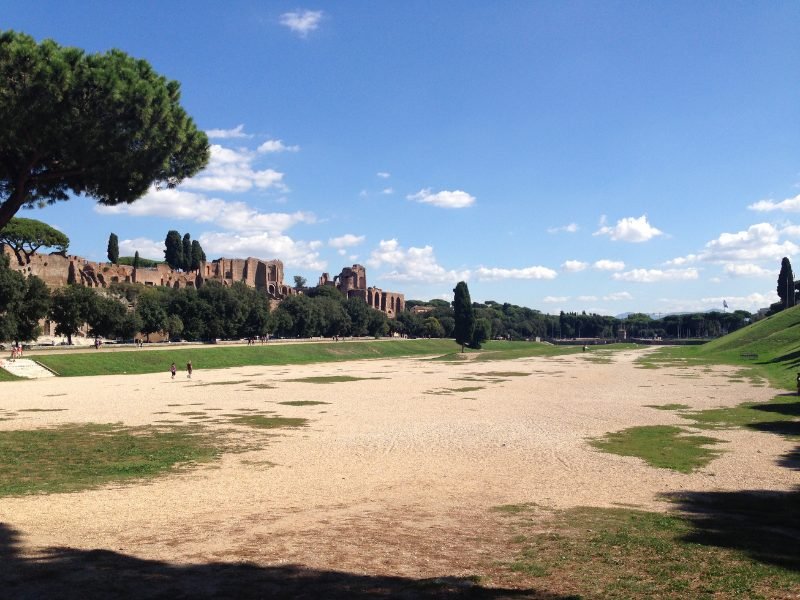
Although now the Circus Maximus may appear like a vast empty lot, it was once one of the most important places in Rome!
The ancient stadium was used for chariot racing and public games, which played a huge role in the public life of the city.
Circus Maximus dates to the 6th century BCE and was the first stadium to be built in Rome, not to mention the largest one.
The last documented race took place at the Circus Maximus in 549 CE, so the stadium hosted around a millennium of history!
Today, a few ruins are all that’s left of the stadium. The wide space is great for a peaceful walk, not far from the main tourist attractions.
The Circus often serves as a venue for concerts and other events, so check the schedule during your visit!
Domus Aurea
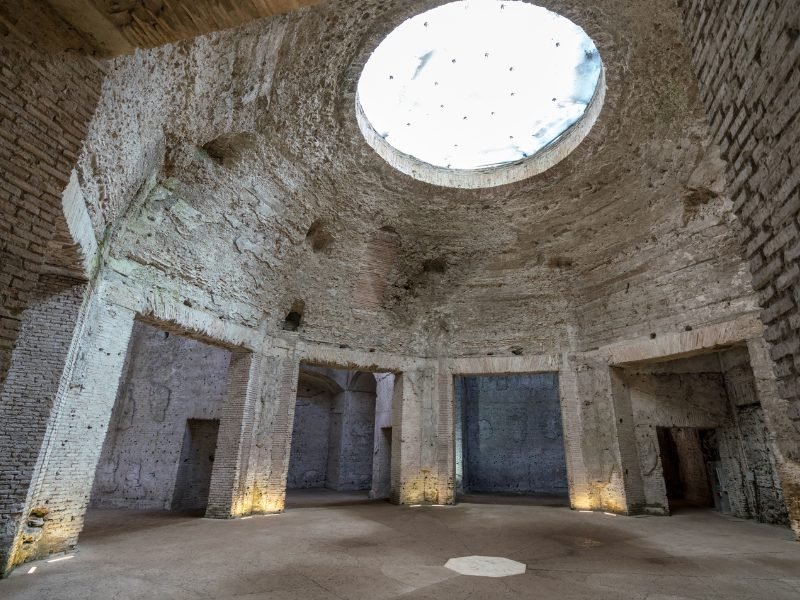
If you want to learn more about ancient Rome, pay a visit to the underground archaeological site of the Domus Aurea (we also have a full guide to it here!)
Once the most magnificent building in Rome, the Domus Aurea was Emperor Nero’s palace, built right after the Great Fire of 64 CE.
After Nero’s death, the Domus Aurea was partly destroyed to make space for the Colosseum. Another part was used by emperor Trajan as the foundation of his public baths.
What remained of the once luxurious palace was filled with rubble and kept underground for nearly two millennia.
Nowadays, the Domus Aurea is a fascinating underground archaeological site.
The tour is enhanced by a virtual reality experience showing you how the palace must have looked back in 68 CE!
Pyramid of Cestius
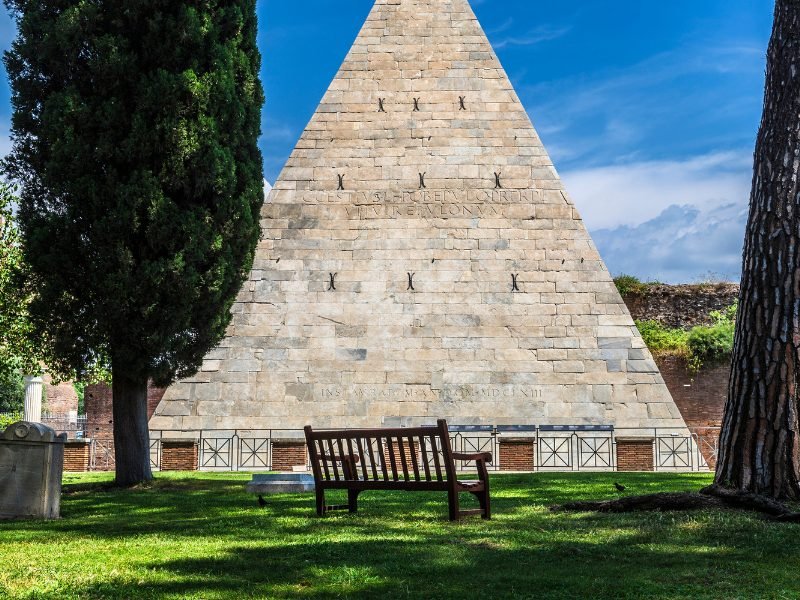
Although it may sound unusual, there is an actual pyramid, right in the middle of Rome!
The Pyramid of Cestius, near the 3rd-century city gate Porta San Paolo, was built to hold the tomb of Gaius Cestius, a Roman magistrate.
The inside of the pyramid was once decorated with frescoes, although few traces survive. The pyramid opened to the public for the first time in 2015.
Unfortunately, at the time of this writing, visits have been temporarily suspended but may restart in the future.
You can still admire the impressive pyramid from the outside and marvel at such an unexpected sight in the middle of a busy intersection.
Basilica of Our Lady in Trastevere
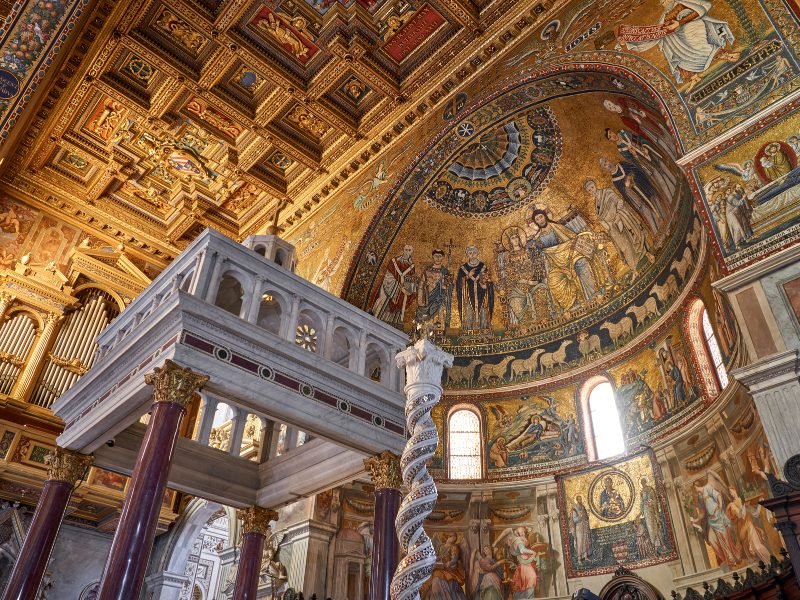
While Trastevere is mainly known for being a foodie and nightlife neighborhood, it’s also home to many beautiful squares and churches.
One of the most important churches in the area is the Basilica of Our Lady in Trastevere.
Originally built in the 4th century, the basilica lies on a Christian house-church of the early 3rd century.
After several restorations, the basilica was finally re-erected between 1140 and 1143.
It was later decorated with stunning mosaics during the 12th and 13th centuries.
One of the highlights is the Mosaic of the Annunciation by Pietro Cavallini, an absolutely stunning work.
Campo de’ Fiori

Campo de’ Fiori translates to Field of Flowers, but the only flowers you will see there are those sold at the daily market that takes place in the big square!
However, the space used to be a meadow during the Middle Ages, and while the flowers may be gone, the name has stuck.
The square has always been a popular commercial area, with each of the streets in the surroundings taking the names of the items being sold there, such as Via dei Cappellari (the street of hat-makers) or Via dei Chiavari (the street of key-makers).
The square was historically used for public executions. In its center, you’ll see a statue dedicated to the philosopher Giordano Bruno, burnt alive in the square in 1600 for views the Church denounced as heretical.
Despite the slightly macabre history, the square is now a lovely area to enjoy a walk and have lunch at one of the many restaurants with terraces.

Roxana is a Romanian-born freelance travel writer who has lived in Italy for over 15 years. She has a Master’s in Journalism and a Bachelor’s in Film Studies, and she studied at Università degli Studi di Roma Tre. Besides her native Romania, Roxana has lived in Rome, Lisbon, and Berlin, and she has traveled through much of Europe in search of hidden gems, history, and culture.